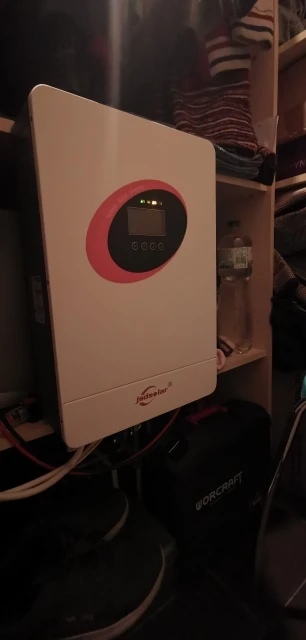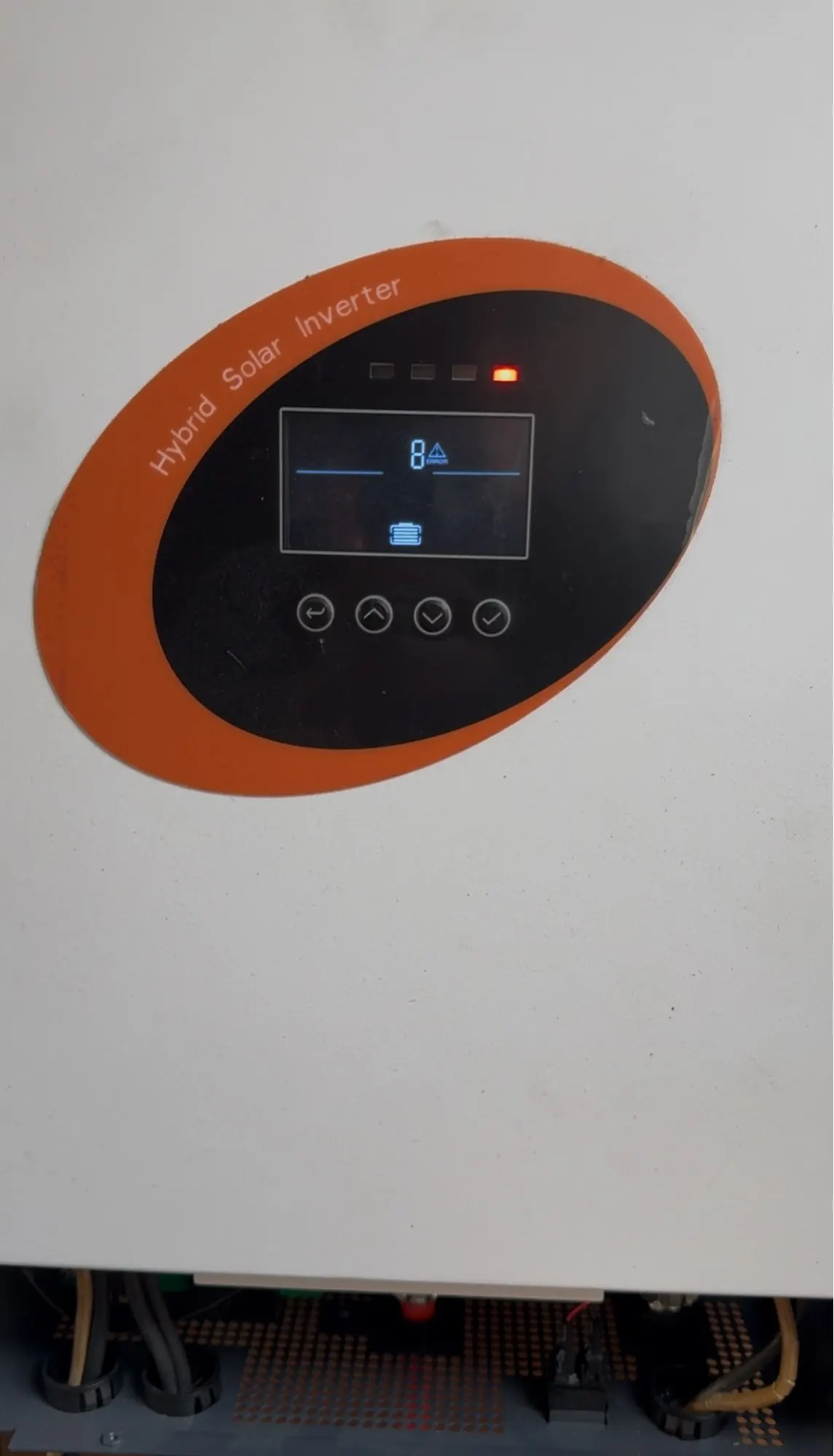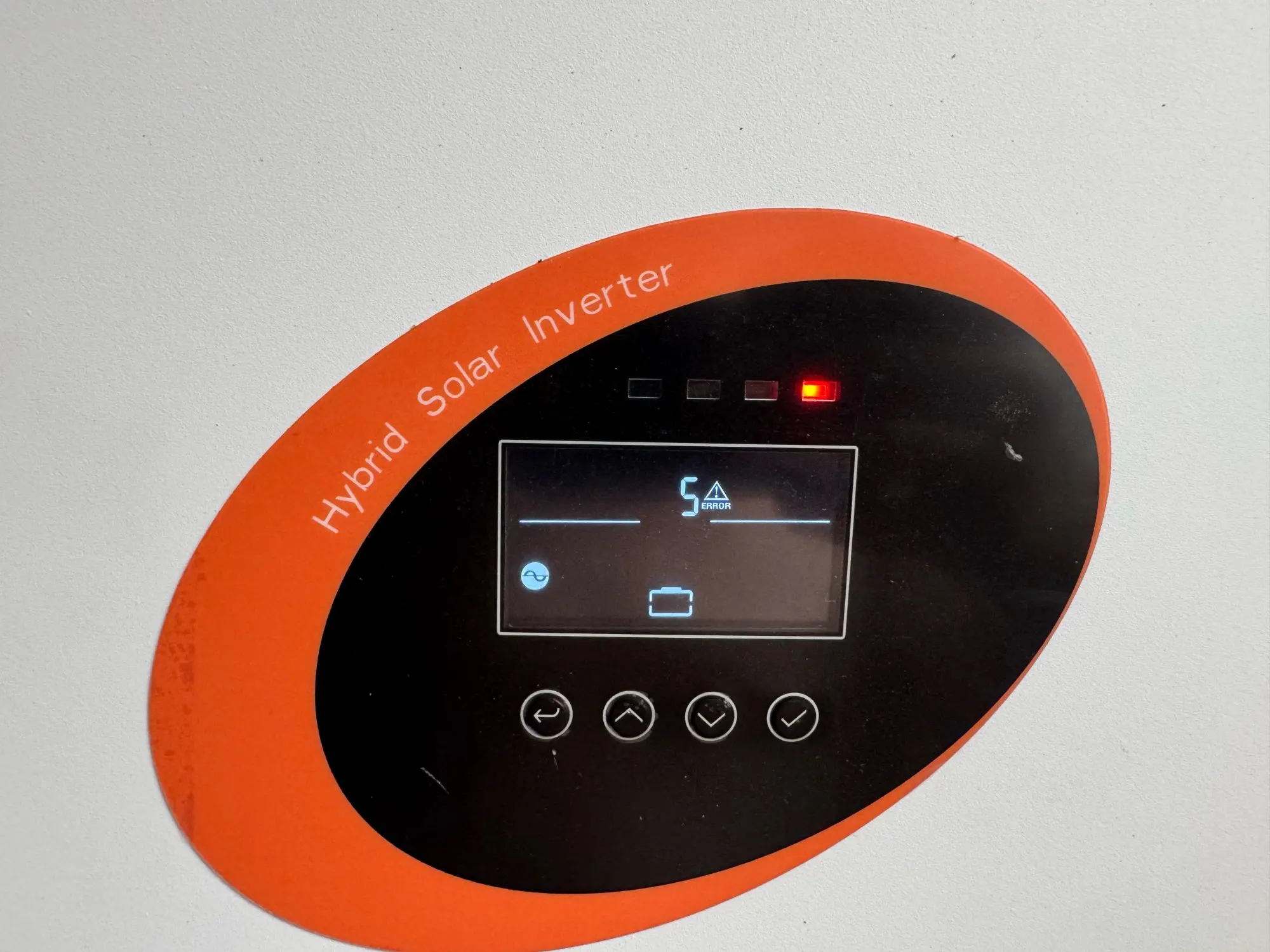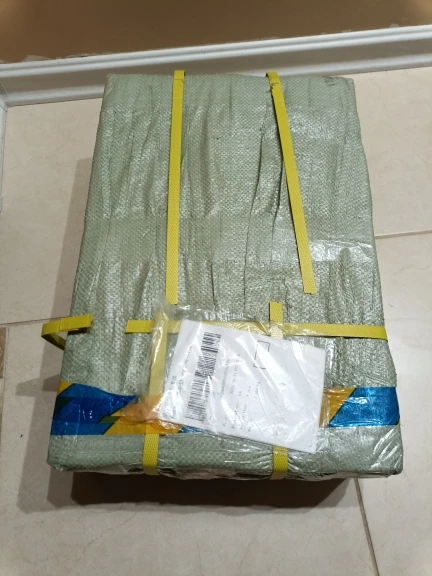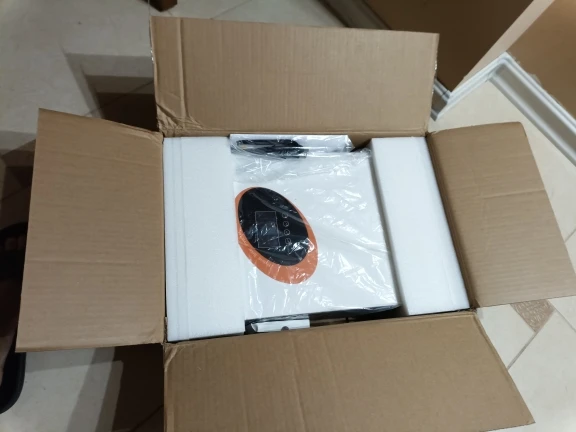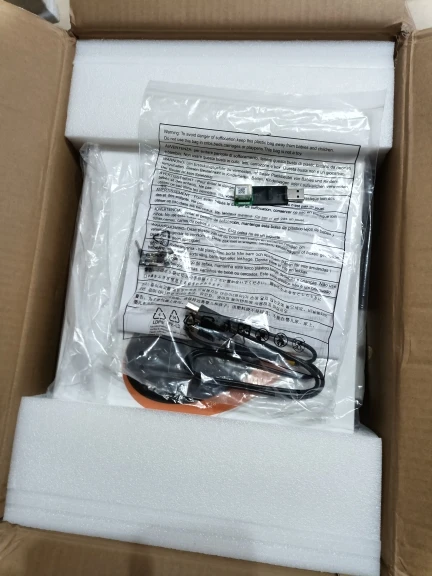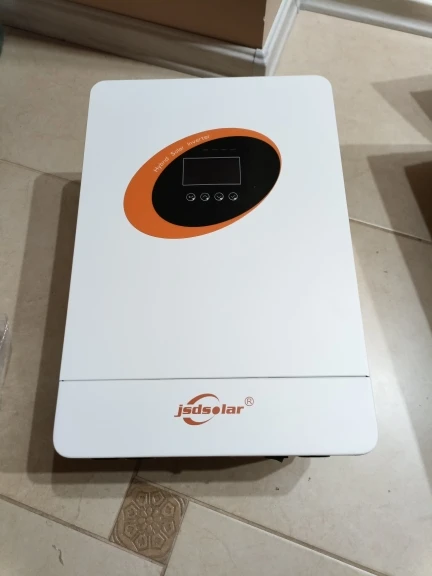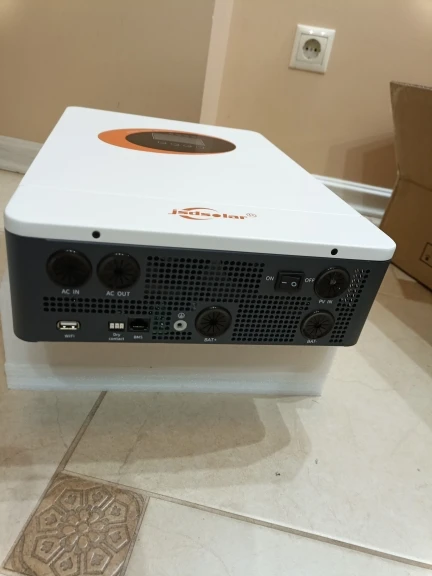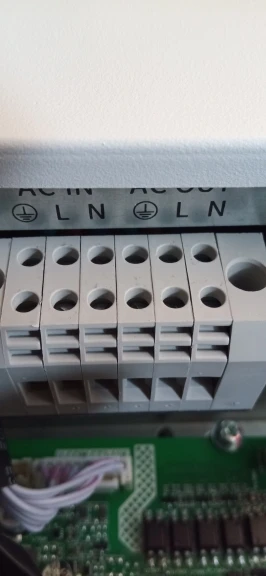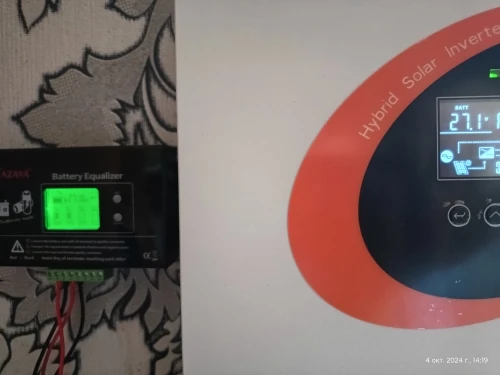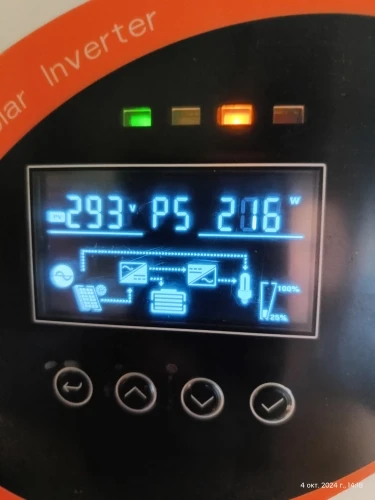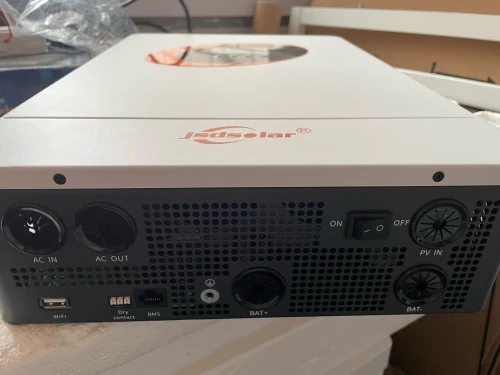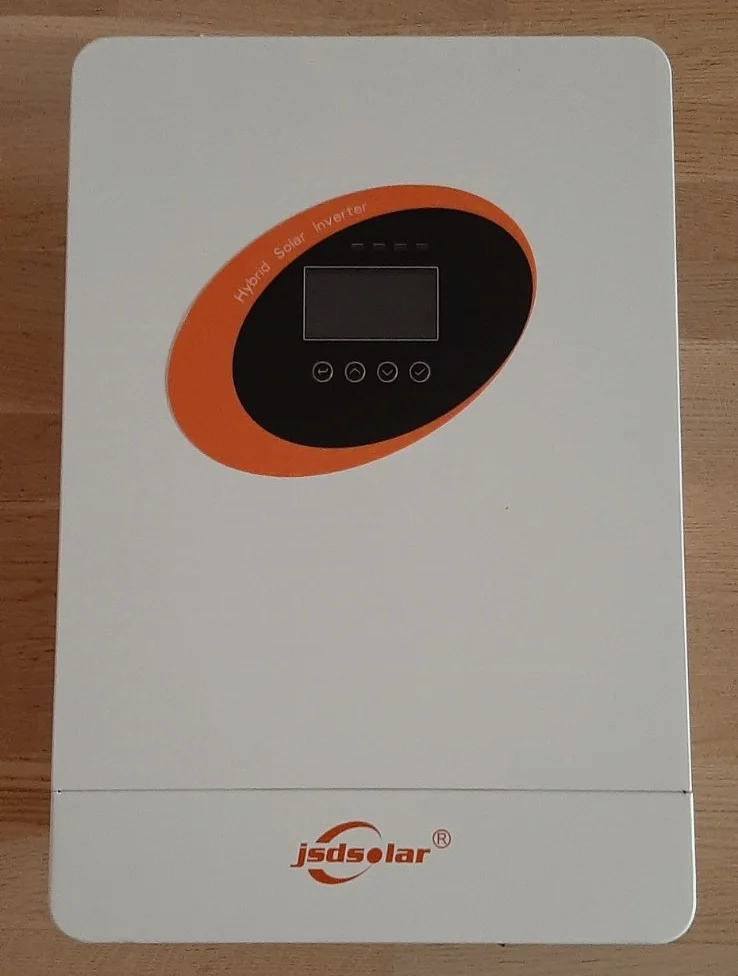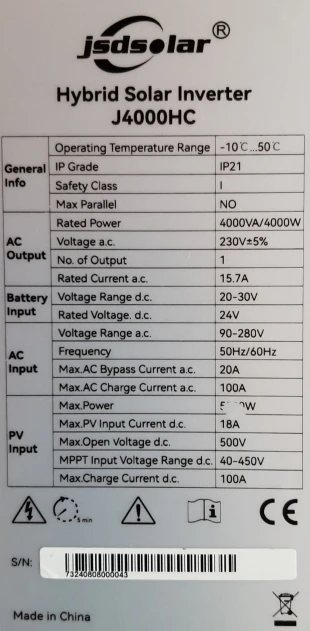New Arrival jsdsolar 4KW 24V Hybrid Solar Inverter MPPT 100A Solar Charger 500VDC PV Input Off Grid Pure Sine Wave with Wifi
★ Pure sine wave inverter ★ Configurable dual AC output ★ Charging current up to 100A ★ Compatible with various battery types ★ Communicate with lithium battery BMS ★ With lithium battery BMS activation function ★ Over temperature / Over load / Over voltage / Short circuit protection ★ Advanced MPPT technology with an efficiency of 99.9% ★ Easy to install and operate
|
Models |
J4000HC |
|
Rated input voltage |
220/230VAC |
|
Input voltage range |
90-280VAC |
|
Frequency |
50Hz/ 60Hz |
|
Bypass Overload Current |
20A |
|
INVERTER OUTPUT
|
|
|
Rated output power (W)
|
4000W
|
|
Rated output voltage (VAC)
|
230VAC
|
|
Output Topology
|
L + N + PE
|
|
Switch Time
|
10ms(Typical)
|
|
Waveform
|
Pure sine wave
|
|
BATTERY
|
|
|
Battery Type |
Lithium / Lead -acid / User-define |
|
Rated Battery Voltage |
24Vdc |
|
Max PV charge current |
100A |
|
Max Mains/Generator Charging Current |
100A |
|
Max Hybrid Charging Current |
100A |
|
PV INPUT
|
|
|
PV Charging method
|
MPPT
|
|
PV Maximum Input Power
|
5000W
|
|
PV Maximum Input Current
|
18A
|
|
Max PV Voltage
|
500Vdc
|
|
MPPT Voltage Range
|
40-450Vdc
|
|
MPPT Tracking Efficiency
|
99%
|
|
Max. Battery Inverter Efficiency
|
92.7%
|
|
COMMUNICATION and GENERAL
|
|
|
Embedded Interfaces |
RS485 / CAN / USB / Dry contact |
|
External Modules (Optional) |
Wifi |
|
Operating Temperature Range |
-10~50℃ |
|
Storage Temperature |
-15~60℃ |
|
Humidity range |
5% to 95% (Conformal coating protection) |
|
Cooling Method |
Intelligent Fan |
|
Size (L*W*D) |
448*298.8*115mm |
|
Protection Degree |
IP20 |
|
Net Weight |
7.3kg |

FAQ
A solar panel has to be connected to a charge controller to regulate current, and a battery to store the electrical power. You will need adapter kit cables to wire the solar panel(s) and charge controller, and tray cables connecting the charge controller to a deep-cycle battery.
On-grid simply means solar power equipment (array or solar panel) is connected to the electrical grid, while off-grid refers to systems that are not connected to the grid and therefore store the generated power for later use. Off-grid systems are not affected by grid blackouts.
Solar panel performance may be hindered for a number of reasons. Most commonly environmental conditions such as indirect sunlight, temperature rise, cloudy sky, and dirt and stain build up on the top glass will cause a reduced power output.
Solar panels can be connected in series or in parallel to meet your electrical circuit size and power demand. Connecting solar panels in series will have the effect of adding up their operating voltage output, while system current output will be the same as that for one panel. While, connecting solar panels in parallel will have a different effect; individual panels operating current output will add up to be the system output current, while system output voltage will be the same as the output voltage of one solar panel. To meet the optimum power output and system rating for your power system, you can use both parallel and series connections.
The best way to gauge how many solar panels you need, is to understand and define the power load needed from this system. Power is measured in Watts, and capacity is commonly measured in Watt-hours (multiplying power output in watts by the required number of hours of operation multiplied by a safety factor of 1.5-2). Therefore, it is wise to size your battery bank first based on the minimum required capacity, and accordingly decide how many panels or how much power input is needed.
Yes, more solar panels can be added to this system to increase the power output. The Rover 40A has a maximum PV input current of 40A, maximum PV input voltage of 100VDC, and maximum input solar power of 520W at 12V or 1040W at 24V. You can wire more solar panels in series / in parallel to achieve larger power output, however you are limited by the maximum input voltage and current the charge controller can handle. It is safer to build a system operating at around 90% of the rated voltage and current to ensure there is a tolerance for any system overvoltage or overcurrent.
In order to determine what size solar kit is appropriate, you must first define the total load to be expected of the solar power system. Most manufacturers will publish a specification sheet of the AC unit online and will include a nameplate sticker on the AC body. Both can be used to determine the actual power rating of the AC. BTU is a common measuring unit for energy in AC and water heater products, however we are intrested in the energy rate, or simply power. Power will be listed in units of Watts, and can be used to determine the total load resulting from running the intended AC unit. Multiply the power rating recorded in watts by the total number of hours of operation intended, to obtain the total watt-hours. Divide the total watt-hours by the peak sun hours in the location of installation, and multiply by a safety factor of 1.5-2, to obtain the total number of watts your panels should produce to power the air conditioner load. The total power load can be divided by the power output of one panel to obtain the number of panels needed.
If you intend to use this solar power kit as a power supply for home appliances (e.g. coffee maker, TV, etc.), then you will need an inverter to convert the output voltage from a 12 VDC system to a 120V AC output socket. Renogy offers a variety of inverter products to suit your unique system and meet your power demand.
More questions about your solar products? Learn more from JSDSOLAR Support!







